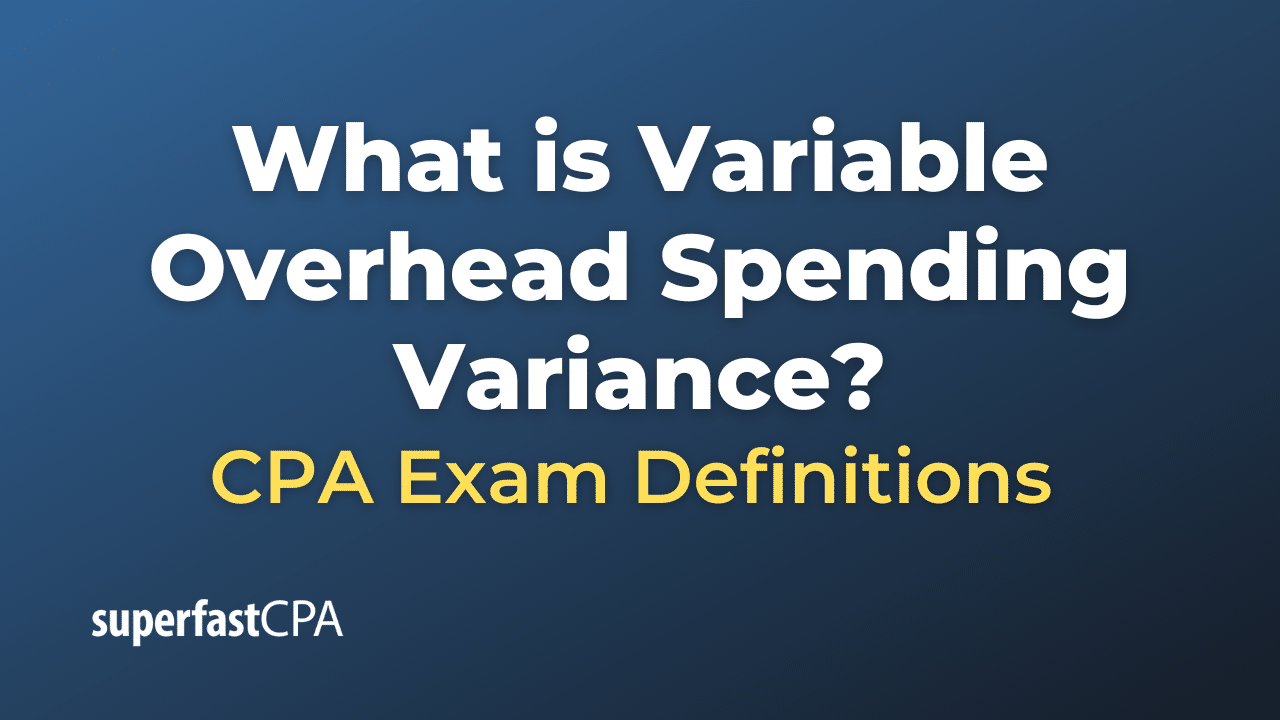
This could be for many reasons, and the production supervisor would need to determine where the variable cost difference is occurring to make production changes. Looking at Connie’s Candies, the following table shows the variable overhead rate at each of the production capacity levels. Variable Overhead Spending Variance is essentially the difference between what the variable production overheads actually cost and what they should have cost given the level of activity during a period. However, the forecast is not always free of errors for several reasons, and the actual overheads incurred vary from the standard overheads. Initially the actual variable overhead expense (electricity etc) would have been posted to the expense account with the usual entry of debit expense, credit accounts payable (not shown). Subsequently the journal above, allocates some of this expense (1,100) to production, this is represented by the credit entry to the expense account.

AccountingTools
Traditional management accounting often define blanket variables such as machine hours or labor hours which seldom provides a meaningful basis of cost control. The use of activity based costing to calculate overhead variances can significantly enhance the usefulness of such variances. Interpretation of the variable overhead rate variance is often difficult because the cost of one overhead item, such as indirect labor, could go up, but another overhead cost, such as indirect materials, could go down.
4: Compute and Evaluate Overhead Variances
- Their work ensures that production lines run efficiently and that products meet quality standards, thereby indirectly influencing production costs.
- This could be for many reasons, and the production supervisor would need to determine where the variable cost difference is occurring to better understand the variable overhead reduction.
- All these lower budgeted expenses are then summed up and a standard cost of variable overheads is calculated.
- A primary component of variable overhead is indirect materials, which include items like lubricants, cleaning supplies, and other consumables that support production but are not part of the final product.
Often, explanation of this variance will need clarification from the production supervisor. Another variable overhead variance to consider is the variable overhead efficiency variance. In this example, the Variable Overhead Spending Variance is $800, which is an unfavorable variance. This means that the company spent $800 more on variable overhead costs than expected, based on the standard rate and the actual hours worked. This variance helps organizations understand how well they are controlling their variable overhead costs. The variable overhead spending variance emphasizes mainly the variable overhead rate by comparing the actual and the standard rate.
Do you already work with a financial advisor?
The articles and research support materials available on this site are educational and are not intended to be investment or tax advice. All such information is provided solely for convenience purposes only and all users thereof should be guided accordingly. Finance Strategists has an advertising relationship with some of the companies included on this website. We may earn a commission when you click on a link or make a purchase through the links on our site.
To determine the overhead standard cost, companies prepare a flexible budget that gives estimated revenues and costs at varying levels of production. The standard overhead cost is usually expressed as the sum of its component parts, fixed and variable costs per unit. Note that at different levels of production, total fixed costs are the same, so the standard fixed cost per unit will change for each production level. However, the variable standard cost per unit is the same per unit for each level of production, but the total variable costs will change. Variable overhead spending variance is favorable if the actual costs of indirect materials — for example, paint and consumables such as oil and grease—are lower than the standard or budgeted variable overheads. On the contrary, as shown in our example above, an unfavorable variable overhead spending variance would be when the actual variable overhead rate per hour is greater than the standard variable overhead per hour rate.
Inefficient use of resources, such as excessive waste or suboptimal scheduling, can inflate costs. Identifying and addressing these inefficiencies requires a thorough analysis of production processes and may involve implementing lean manufacturing techniques to streamline operations and reduce waste. Understanding how to manage these variances allows companies to make informed decisions that enhance operational performance. This involves identifying the factors contributing to discrepancies between budgeted and actual expenses. This $2.917 per hour ($22.917 per hour – $20 per hour) higher actual rate results in the company ABC actually spends $1,400 more than budgeted for the variable overhead.
Variable overhead spending variance is the difference between the standard variable overhead rate and the actual variable overhead rate applying to the actual hours worked during the period. Thus a positive value of variable overhead spending variance is favorable and a negative value is unfavorable. The total variable overhead cost variance is also found by combining the variable overhead rate variance and the variable overhead efficiency variance.
If the result is positive, the variance is favorable; otherwise, the variance is unfavorable. All these lower budgeted expenses are then summed up and a standard cost of variable overheads is calculated. The factory worked for 26 days putting in 860 hours work every day and achieved an output of 2,050 units. The expenditure incurred what are the different types of accountants as overheads was 49,200 towards variable overheads and 86,100 towards fixed overheads. If however, the balances are significant in relation to the size of the business, then we need to analyze the variable overhead variances between the inventory accounts (work in process, and finished goods) and the cost of goods sold account.